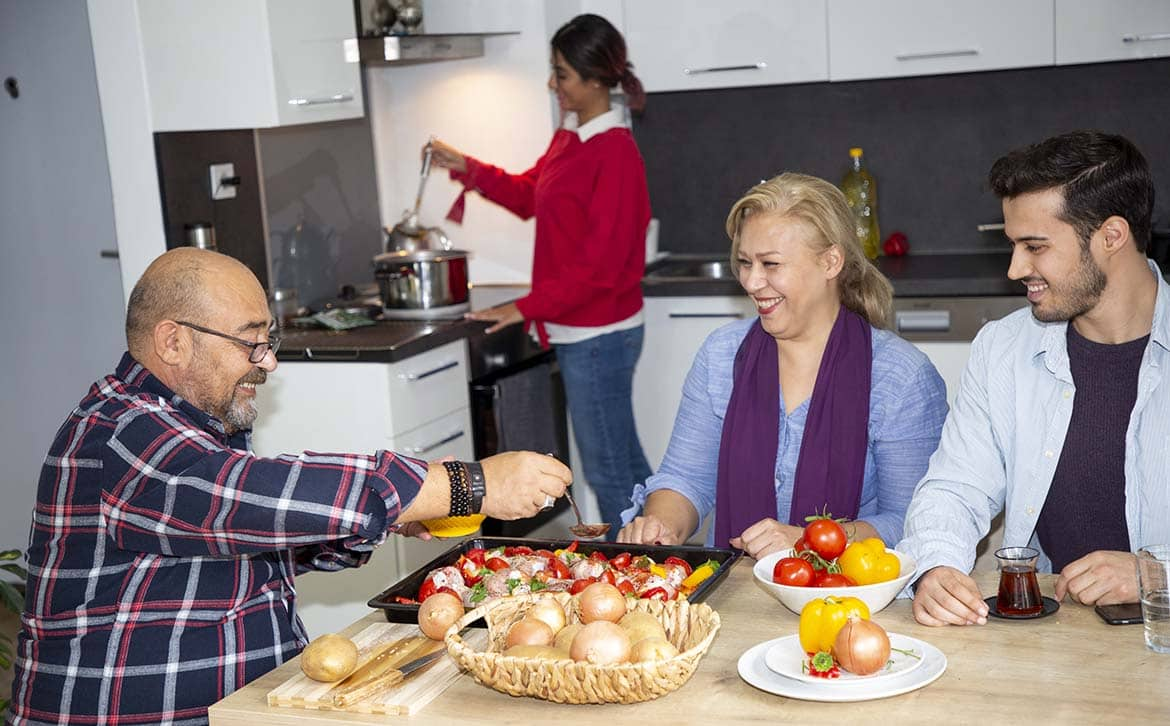
5 steps to reducing food waste at home
As a nation of food lovers and waste haters, it’s surprising how much of our food ends up in the bin.
Good food thrown out from our homes in Scotland amounts to over £1 billion worth, costing every household in Scotland on average £470 a year.
And it’s not just bad for our pockets. Wasting food impacts the environment and contributes to our climate change emissions.
Taking just a few easy and practical steps to cut down on food waste at home can go a long way towards helping the planet and saving us money too.
It’s all in the planning
It might sound obvious, but the best way to start making food waste a thing of the past is to start with a plan. Think about what you are going to make for the next few days and how you will use up any leftover ingredients.
Check your cupboards, fridge and freezer before you go to the shop and write a shopping list to make sure you buy only what you need and don’t double up on ingredients you already have.
Our Food Waste Campaigns Manager, Ylva, recently put this to the test, “I committed to planning my meals for four weeks and found that I ate better and more varied foods.
It brought down my food waste to practically zero and I found I saved around £20 a week on my shopping. I saved time too as I wasn’t constantly in and out of the shops!”
Households in Scotland spend an average of £440 a year on food that ends up thrown in the bin.
Share on

Be store cupboard savvy
Keep a stock of canned, dried and frozen foods, like pasta, rice and vegetables in your cupboards and freezer. That way you can always rustle up a decent meal or create something with your leftovers.
This saves food, money and time as you are using up what you have rather than constantly nipping out to the shops for more food. There are loads of great leftover recipe ideas on the Love Food Hate Waste Scotland website.
Get familiar with your fridge
Around half of the good food we bin from our homes is wasted because we didn’t use it up in time. Understanding what the ‘best before’ and ‘use by’ dates mean is key for making the most of your food.
‘Use by’ is the only date label that relates to food safety whereas ‘best before’ is an indication of quality only.
Check the dates on the things in your fridge regularly, like meat and fish, and move them into the freezer if you think you won’t have time to cook them soon. You can freeze foods right up until the ‘use by’ date.
‘Use by’ is the only date label which relates to food safety whereas ‘best before’ is an indication of quality only.
Share on
Make good use of the freezer
Most food can be frozen, including many of the foods we waste the most.
Eggs are a great example of this with an estimated 87,000 thrown away every day from our homes in Scotland. To save them, simply crack your eggs into a sealable container and freeze.
You can separate the yolks from whites first if you want to use them for different dishes. Just make sure you label the containers so you can easily identify them later.
Bread is another food waste culprit. We bin over 2 million slices of bread every day from our homes in Scotland.
It’s easy to be a bread saving hero though, as you can freeze all varieties of bread. Slices from a frozen loaf can be defrosted as needed or toasted straight from the freezer.
Get your portions right
Day after day we serve up things like rice, potatoes and pasta and what we don’t eat often ends up being chucked out. Over a year this will add up to a lot of food waste!
Find out the portion you need for the people you are cooking for. For example, a mug full of rice will serve four adults.
Once you’ve got the amount right, there needs to be no waste from portions that are too big ever again, and you will also save a lot of money in the long run.
Get involved
Check the dates on the things in your fridge regularly, like meat and fish, and move them into the freezer if you think you won’t have time to cook them.
Keep a stock of essentials like pasta, rice and vegetables so that you always have options for using up leftovers.
Check your cupboards and write a list before you go food shopping.
Freeze bread – slices from a frozen loaf can then be defrosted as needed or toasted straight from the freezer.
Check your portions to avoid extras going to waste.
